Chrysler 2007 Annual Report Download - page 112
Download and view the complete annual report
Please find page 112 of the 2007 Chrysler annual report below. You can navigate through the pages in the report by either clicking on the pages listed below, or by using the keyword search tool below to find specific information within the annual report.-
 1
1 -
 2
2 -
 3
3 -
 4
4 -
 5
5 -
 6
6 -
 7
7 -
 8
8 -
 9
9 -
 10
10 -
 11
11 -
 12
12 -
 13
13 -
 14
14 -
 15
15 -
 16
16 -
 17
17 -
 18
18 -
 19
19 -
 20
20 -
 21
21 -
 22
22 -
 23
23 -
 24
24 -
 25
25 -
 26
26 -
 27
27 -
 28
28 -
 29
29 -
 30
30 -
 31
31 -
 32
32 -
 33
33 -
 34
34 -
 35
35 -
 36
36 -
 37
37 -
 38
38 -
 39
39 -
 40
40 -
 41
41 -
 42
42 -
 43
43 -
 44
44 -
 45
45 -
 46
46 -
 47
47 -
 48
48 -
 49
49 -
 50
50 -
 51
51 -
 52
52 -
 53
53 -
 54
54 -
 55
55 -
 56
56 -
 57
57 -
 58
58 -
 59
59 -
 60
60 -
 61
61 -
 62
62 -
 63
63 -
 64
64 -
 65
65 -
 66
66 -
 67
67 -
 68
68 -
 69
69 -
 70
70 -
 71
71 -
 72
72 -
 73
73 -
 74
74 -
 75
75 -
 76
76 -
 77
77 -
 78
78 -
 79
79 -
 80
80 -
 81
81 -
 82
82 -
 83
83 -
 84
84 -
 85
85 -
 86
86 -
 87
87 -
 88
88 -
 89
89 -
 90
90 -
 91
91 -
 92
92 -
 93
93 -
 94
94 -
 95
95 -
 96
96 -
 97
97 -
 98
98 -
 99
99 -
 100
100 -
 101
101 -
 102
102 -
 103
103 -
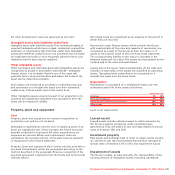 104
104 -
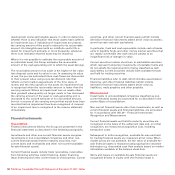 105
105 -
 106
106 -
 107
107 -
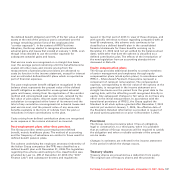 108
108 -
 109
109 -
 110
110 -
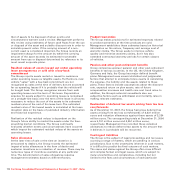 111
111 -
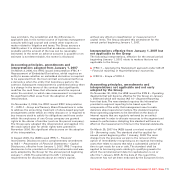 112
112 -
 113
113 -
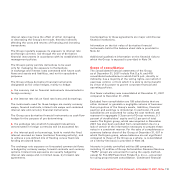 114
114 -
 115
115 -
 116
116 -
 117
117 -
 118
118 -
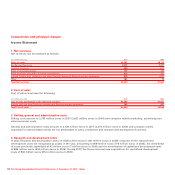 119
119 -
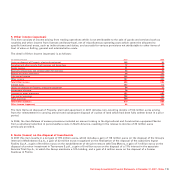 120
120 -
 121
121 -
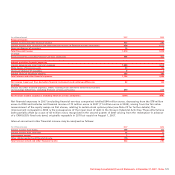 122
122 -
 123
123 -
 124
124 -
 125
125 -
 126
126 -
 127
127 -
 128
128 -
 129
129 -
 130
130 -
 131
131 -
 132
132 -
 133
133 -
 134
134 -
 135
135 -
 136
136 -
 137
137 -
 138
138 -
 139
139 -
 140
140 -
 141
141 -
 142
142 -
 143
143 -
 144
144 -
 145
145 -
 146
146 -
 147
147 -
 148
148 -
 149
149 -
 150
150 -
 151
151 -
 152
152 -
 153
153 -
 154
154 -
 155
155 -
 156
156 -
 157
157 -
 158
158 -
 159
159 -
 160
160 -
 161
161 -
 162
162 -
 163
163 -
 164
164 -
 165
165 -
 166
166 -
 167
167 -
 168
168 -
 169
169 -
 170
170 -
 171
171 -
 172
172 -
 173
173 -
 174
174 -
 175
175 -
 176
176 -
 177
177 -
 178
178 -
 179
179 -
 180
180 -
 181
181 -
 182
182 -
 183
183 -
 184
184 -
 185
185 -
 186
186 -
 187
187 -
 188
188 -
 189
189 -
 190
190 -
 191
191 -
 192
192 -
 193
193 -
 194
194 -
 195
195 -
 196
196 -
 197
197 -
 198
198 -
 199
199 -
 200
200 -
 201
201 -
 202
202 -
 203
203 -
 204
204 -
 205
205 -
 206
206 -
 207
207 -
 208
208 -
 209
209 -
 210
210 -
 211
211 -
 212
212 -
 213
213 -
 214
214 -
 215
215 -
 216
216 -
 217
217 -
 218
218 -
 219
219 -
 220
220 -
 221
221 -
 222
222 -
 223
223 -
 224
224 -
 225
225 -
 226
226 -
 227
227 -
 228
228 -
 229
229 -
 230
230 -
 231
231 -
 232
232 -
 233
233 -
 234
234 -
 235
235 -
 236
236 -
 237
237 -
 238
238 -
 239
239 -
 240
240 -
 241
241 -
 242
242 -
 243
243 -
 244
244 -
 245
245 -
 246
246 -
 247
247 -
 248
248 -
 249
249 -
 250
250 -
 251
251 -
 252
252 -
 253
253 -
 254
254 -
 255
255 -
 256
256 -
 257
257 -
 258
258 -
 259
259 -
 260
260 -
 261
261 -
 262
262 -
 263
263 -
 264
264 -
 265
265 -
 266
266 -
 267
267 -
 268
268 -
 269
269 -
 270
270 -
 271
271 -
 272
272 -
 273
273 -
 274
274 -
 275
275 -
 276
276 -
 277
277 -
 278
278 -
 279
279 -
 280
280 -
 281
281 -
 282
282 -
 283
283 -
 284
284 -
 285
285 -
 286
286 -
 287
287 -
 288
288 -
 289
289 -
 290
290 -
 291
291 -
 292
292 -
 293
293 -
 294
294 -
 295
295 -
 296
296 -
 297
297 -
 298
298 -
 299
299 -
 300
300 -
 301
301 -
 302
302 -
 303
303 -
 304
304 -
 305
305 -
 306
306 -
 307
307 -
 308
308 -
 309
309 -
 310
310 -
 311
311 -
 312
312 -
 313
313 -
 314
314 -
 315
315 -
 316
316 -
 317
317 -
 318
318 -
 319
319 -
 320
320 -
 321
321 -
 322
322 -
 323
323 -
 324
324 -
 325
325 -
 326
326 -
 327
327 -
 328
328 -
 329
329 -
 330
330 -
 331
331 -
 332
332 -
 333
333 -
 334
334 -
 335
335 -
 336
336 -
 337
337 -
 338
338 -
 339
339 -
 340
340 -
 341
341
 |
 |
Fiat Group Consolidated Financial Statements at December 31, 2007 - Notes 111
case and claim, the jurisdiction and the differences in
applicable law. In the normal course of business management
consults with legal counsel and certain other experts on
matter related to litigation and taxes. The Group accrues a
liability when it is determined that an adverse outcome is
probable and the amount of the loss can be reasonably
estimated. In the event an adverse outcome is possible or an
estimate is not determinable, the matter is disclosed.
Accounting principles, amendments and
interpretations adopted from January 1, 2007
On March 3, 2006, the IFRIC issued interpretation IFRIC 9 –
Reassessment of Embedded Derivatives
, which requires an
entity to assess whether an embedded derivative is required
to be separated from the host contract and accounted for as
a derivative when the entity first becomes a party to the
contract. Subsequent reassessment is prohibited unless there
is a change in the terms of the contract that significantly
modifies the cash flows that otherwise would be required
under the contract, in which case reassessment is required.
No significant effect arose from the adoption of this
interpretation.
On November 2, 2006, the IFRIC issued IFRIC Interpretation
11 –
IFRS 2
-
Group and Treasury Share Transactions
in order
to address the accounting treatment of share-based payment
arrangements under which an entity chooses or is required to
buy treasury stock to satisfy its obligations and those under
which the employees of one Group company are granted
rights to the shares of another (such as the parent company).
The Group early adopted this interpretation and applied it to
the stock option plan for which rights were granted in
November 2006. No significant effects arose on the adoption
of the interpretation.
In August 2005, the IASB issued IFRS 7 –
Financial
Instruments: Disclosures
and a complementary amendment
to IAS 1 –
Presentation of Financial Statements
– Capital
Disclosures, effective from January 1, 2007. IFRS 7 requires
disclosures to be provided on financial instruments and was
early adopted by the Group for the annual period beginning
January 1, 2005. The amendment to IAS 1 introduces
requirements for disclosures about an entity’s capital,
without any effect on classification or measurement of
capital items. The Group adopted this amendment for the
annual period beginning January 1, 2007.
Interpretations effective from January 1, 2007 but
not applicable to the Group
The following interpretations, effective for the annual period
beginning January 1, 2007, relate to matters that are not
applicable to the Group:
■ IFRIC 7 –
Applying the Restatement approach under IAS 29
– Financial reporting in Hyperinflationary economies;
■ IFRIC 8 –
Scope of IFRS 2
.
Accounting principles, amendments and
interpretations not applicable and not early
adopted by the Group
On November 30, 2006, the IASB issued the IFRS 8 –
Operating
Segments
that will become effective for the Group on January
1, 2009 and which will replace IAS 14 –
Segment Reporting
from that date. The new standard requires the information
provided in segment reporting to be based upon the
components of the entity that management uses to make
decisions about operational matters. The standard requires
these operating segments to be identified on the basis of
internal reports that are regularly reviewed by an entity’s
management in order to allocate resources to the segment and
assess its performance. Adopting this standard will have no
effect on the measurement of items in the financial statements.
On March 29, 2007 the IASB issued a revised version of IAS
23 –
Borrowing costs
. The standard shall be applied for
annual period beginning after 1 January, 2009. The main
change from the previous version is the removal of the
option of immediately recognising as an expense borrowing
costs that relate to assets that take a substantial period of
time to get ready for use or sale. The standard shall be
applied to borrowing costs relating to qualifying assets for
which the commencement date for capitalisation is on or
after the 1 January 2009. At the date of this report this
document has not yet been endorsed by the European Union.
